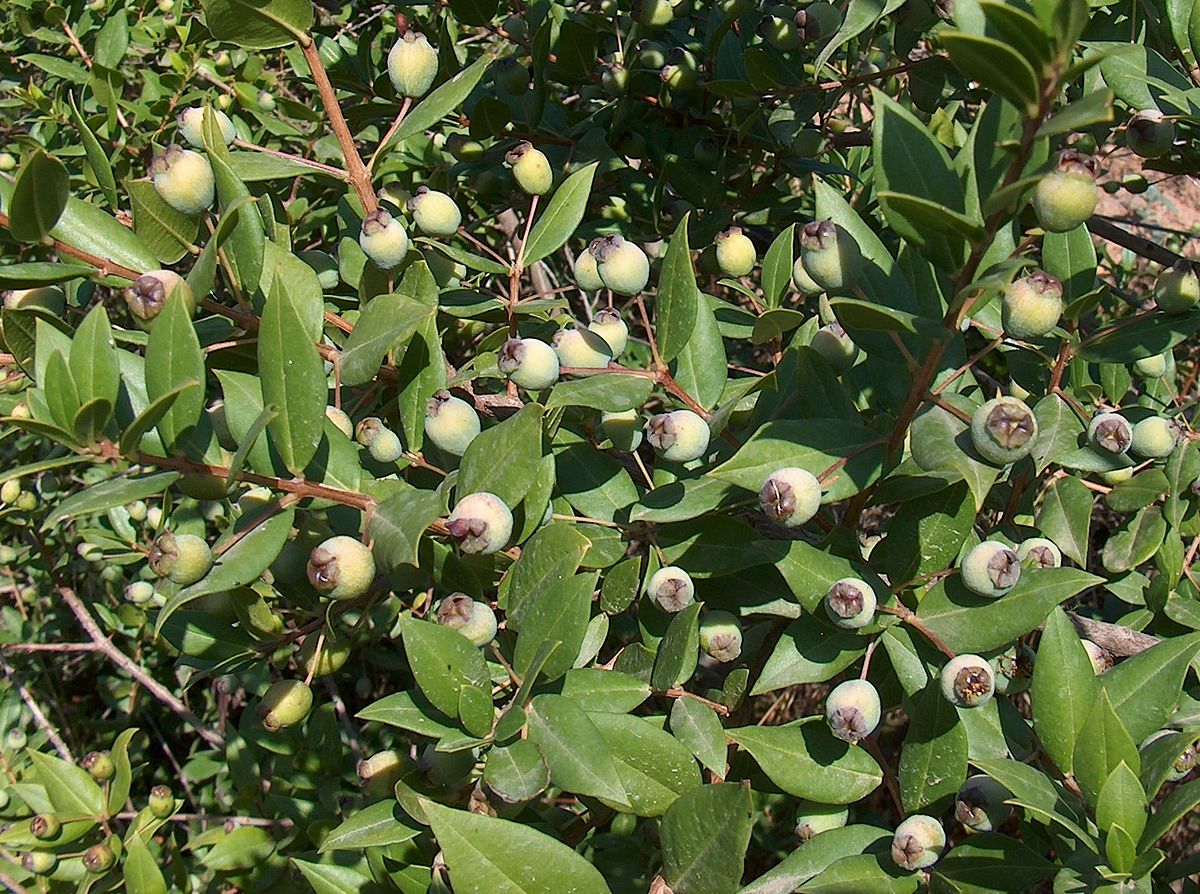Myrtle Plant is the sacred plant of the Greek goddess Aphrodite and the Roman goddess Venus, and Hermes fashioned his magical sandals from myrtle branches. Fragrant myrtle is associated with both love and death in the ancient world. The myrtle tree was originally a dead tree, on which Hippolytus in flight from Athens caught these chariot reins and was dragged to death by his horses.
A Myrtle Plant was reported to have grown near his hero’s shrine. The Myrtle-nymphs were prophetesses who taught the god Aristaeus, son of Apollo and Gyrene, the useful arts of making cheese, building beehives, and cultivating olives. Venus, a very early Latin goddess of spring, seems to have been first called Murcia, a deity that later was interpreted as Myrtea, goddess of myrtles.
Sacred myrtle grew in the groves at Eleusis when the initiates to the religious mysteries trolled there, wearing the leaves as wreaths. Myrtle, along with mint and rosemary, was burned from very early times in funeral rites. Theophrastus, however, in his Characters, written in the later fourth century B.C., chides those superstitious Greeks who on the fourth and seventh days of each month buy myrtle boughs to garland their household gods.
In the first century, Pliny reports a belief that on an extended journey afoot traveler who carries a myrtle stick or rod will never feel weariness or tedium. In his Enquiry into Plants, Theophrastus tells us that of all cultivated plants myrtle and bay are least likely to thrive in cold regions. Especially myrtle, he adds, for on Mount Olympus bay is abundant, but there is no myrtle; yet in the Propontis, myrtle and bay are both found on the mountains.
In Concerning Odors he records a myrtle perfume made from the leaves and fruit of the tree. Athenians regarded the berries of the myrtle as a confection. In a fragment from Anti phanes’ (480-334 B.C.) comedy the Cretans begins: “But first of all/I want some myrtle berries on the table/which I may eat just as it pleases me And they must be Phibalean, very fine/Fit for a garland.”
Pliny notes that even when chewed the day before, they make the mouth smell sweet and that the women eat them in Menander’s comedy Synaristosae (Women at Lunch). His final word on the subject is a “prescription for offensive breath, a very embarrassing complaint.
Myrtle Plant leaves with an equal weight of lentisci (a Syrian nut) and one-half quantity of old wine maybe chewed with benefit in the morning.”In his De agriculture Cato gives instructions for making myrtle wine: dry black myrtle berries in the shade; when shriveled, store until vintage time; crush one-half peck of myrtle berries in three gallons of must; seal the vessel; when fermentation stops, remove the myrtle berries.
In the Aeneid, Virgil portrays Augustus encircling his temples with ancestress’ myrtle to show his descent from the goddess Venus. He moves then to the “shores rejoicing in myrtle groves,” “the myrtle in stout spear shafts,” and again later to “the shore-loving myrtle.”

Horace encircled his brow often, preferring simpler myrtle to the more fashionable garlands of Persian roses, as he stretched out to sip wine or to make love under the moon on his Sabine farm: “Cytherean Venus already leads her bands of dancers beneath the overhanging moon. Now is the fitting time to bind our glistening locks with green myrtle.”Dioscorides calls the myrtle myrsine and distinguishes a black and a white variety.
He considers the black better medicinally and lists dozens of remedies made from it. The fruit is good for hemoptysis and ulcers, as is the juice of green myrtle which also helps the stomach. A decoction of the fruit dyes the hair black and mixed with wine it cures obstinate sores of the body extremities. Applied with flour, it relieves eye inflammations.
Pliny independently lists similar uses and adds a few others. Oil from the same myrtle is milder than the juice, and so also is myrtle wine which never intoxicates. A decoction of leaves in wine clears up freckles, hangnails, whitlows, sores of the eyelid, and venereal diseases in men.
For swelling of the groin, one need merely carries a sprig of myrtle that has touched neither iron nor the ground. Pliny also refers to a wild myrtle (“myrtus silvestris”), which can be distinguished from the cultivated by its red berries and small size, and young stalks cooked in ashes are eaten like asparagus. The Myrtle Plant that was eaten has been identified by modern botanists as Ruscus aculeatus, commonly known as Butcher’s Broom or Jew’s Myrtle.








